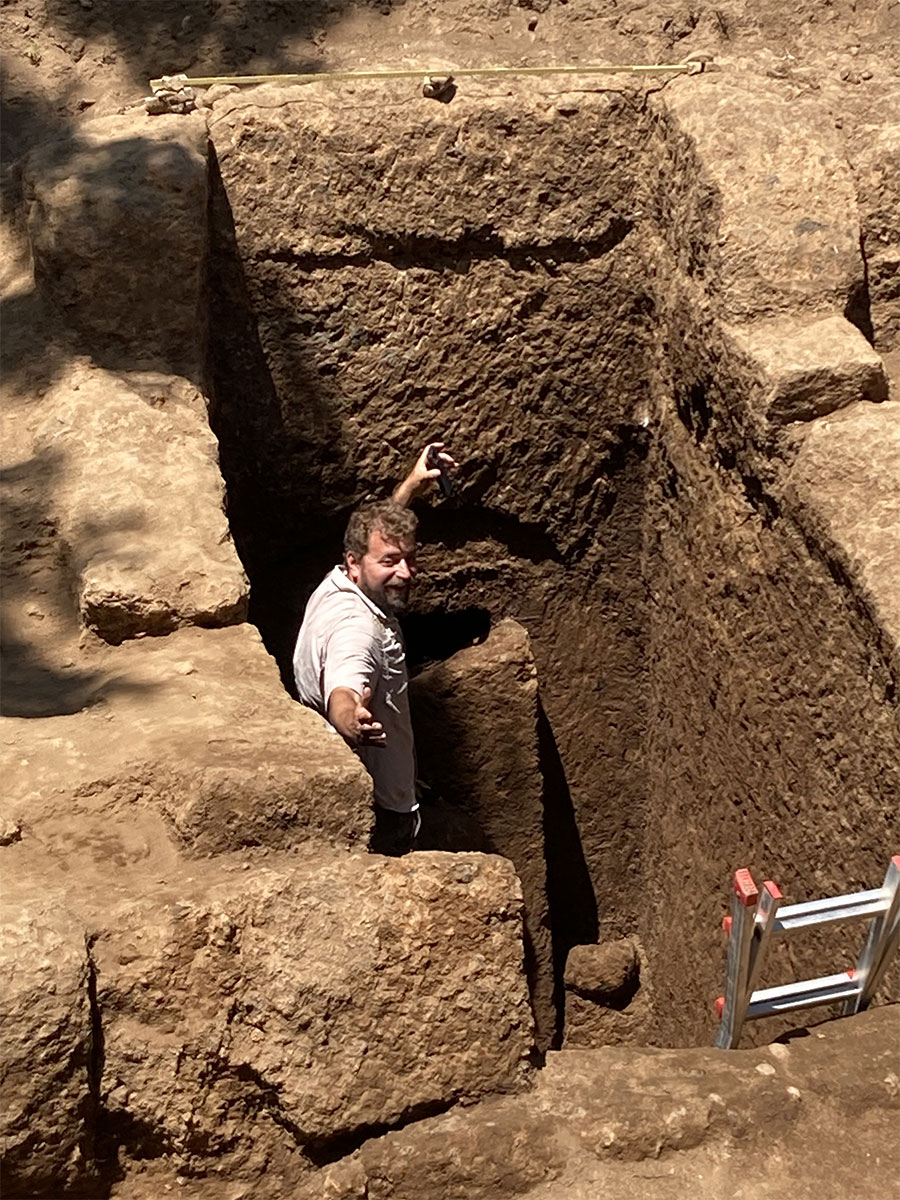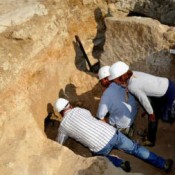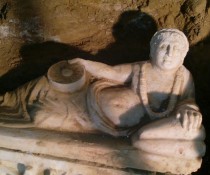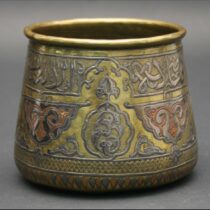A team of archaeologists, led by Baylor University’s Davide Zori, Ph.D., principal investigator for San Giuliano Archaeological Research Project (SGARP), has uncovered a rare, intact Etruscan chamber tomb in central Italy – a discovery hailed as one of the most significant finds in recent decades for understanding the ancient pre-Roman civilization.
The sealed chamber tomb at San Giuliano – a site located approximately 70 km northwest of Rome – dates back 2,600 years, according to Zori, who also serves as associate professor of history and archaeology in the Baylor Interdisciplinary Core (BIC) in the Honors College.
Inside the undisturbed tomb, the remains of four individuals lay on carved stone beds surrounded by more than 100 remarkably well-preserved grave goods, including ceramic vases, iron weapons, bronze ornaments and delicate silver hair spools.
“This completely sealed burial chamber represents a rare find for Etruscan archaeology,” Zori said. “In the internal hilly region of central Italy, where the SGARP team works, a preserved chamber tomb of this age has never before been excavated with modern archaeological techniques. It is a unique opportunity for our project to study the beliefs and burial traditions of this fascinating pre-Roman culture.”
Global collaboration
SGARP is a Baylor-led interdisciplinary team of archaeologists, art historians, geologists and historians working in partnership with the Virgil Academy in Rome under the auspices of Italy’s Ministry of Culture and in full partnership with the town of Barbarano Romano. Students from Baylor University join the project every summer as part of a study abroad course, “Archaeology in Research in Italy,” led by Zori.
The program, which began in 2016, has made significant discoveries throughout the years, but this particular study demonstrates firsthand how archaeological discoveries emerge from careful fieldwork and systematic analysis. Zori said it’s through this process that significant finds result from “patience, persistence and collaborative effort rather than dramatic moments of revelation.”
Over the years, the team has documented over 600 tombs in the necropolis surrounding the Etruscan town, which sits atop the San Giuliano Plateau in the Lazio province in central Italy. Until the discovery of the intact tomb, all the other identified chamber tombs – carved out of the rock in the shape of small houses with pitched roofs – had been looted over the centuries, beginning as early as the Roman occupation in the late 3rd century BC.
Preliminary analysis of the tomb objects suggests that the buried individuals might be two male-female pairs, but further conclusions await anthropological, isotopic and genetic study of the remains.
“The SGARP team has completed the excavation of the tomb, but the study and analysis of the archaeological data yielded by this incredible discovery is just beginning,” Zori said.
Academic impact
As an active field school since 2016, the academic opportunities and educational impact of this discovery extend far beyond the immediate research team. Zori said the excavation of the intact Etruscan tomb represents more than just an archaeological discovery – it embodies the potential of interdisciplinary collaboration, international partnership and educational innovation to advance human understanding of a shared cultural heritage.
Baylor undergraduates have participated directly in every aspect of the excavation process, from initial site preparation through the careful documentation now underway, which represents an incredible opportunity to bring their education into a first-hand, real-world experience. Zori said students gained hands-on experience with stratigraphic excavation, artifact documentation and preservation protocols – such as the cleaning of the vases, sherds and other items – while working within the framework of Italian heritage law and international academic collaboration.
“Being part of a project that uncovered an unlooted tomb was extremely surreal,” said Kendall Peterson, senior anthropology major from San Antonio, TX.“It is something that archaeologists hope for their entire careers, and it was incredibly emotional to witness not only our professors’ reactions but also the pride and excitement of the local community of Barbarano. It reminded me that we aren’t just studying artifacts, we’re contributing to a shared cultural heritage that still deeply matters to the people who live there today.”
“In addition to the work of receiving, processing, and cataloging finds from the excavation, we also regularly work to engage the local community in their cultural heritage,” said Jerolyn E. Morrison, Ph.D., project laboratory director and temporary lecturer in Baylor’s Department of Art & Art History. “Many members of the town of Barbarano Romano, as well as academic guests, visited the lab to view the vases and the students participated too.
“Welcoming people into the lab was a strong reminder of how wonderfully powerful objects are, and how these artifacts from the tomb connect all of us both to the past and to each other,” Morrison added.
Engaged learning
The breakthrough showcases the power of interdisciplinary research, international collaboration and hands-on student engagement in one of history’s most storied landscapes.
“For Baylor University, this discovery validates our commitment to international collaboration and demonstrates how American universities can contribute meaningfully to global archaeological research while providing transformative educational experiences for our students,” Zori said.
For co-principal investigator Jamie Aprile, Ph.D., supervisor of the excavation area where the tomb was discovered and incoming adjunct lecturer in the BIC this fall, “the culmination of our sustained work has yielded a breakthrough of considerable scientific value.”
“This discovery establishes our program as a serious contributor to Mediterranean archaeology through methodical, collaborative research that produces results of international significance,” Aprile said. “It will reshape scholarly discussions about Etruscan cultural development.”
Numerous Baylor students, faculty members and administrators have visited the site over the years, including President Linda A. Livingstone and Provost Nancy Brickhouse, as well as Honors College Dean Douglas Henry, who joined the team on site this summer.
“The Etruscan chamber tomb excavated this summer is, of course, astonishing with its array of exceptional intact pottery and other artifacts. Walking into that space and seeing the finds in situ is an experience I will long remember,” Henry said. “There is so much to tell – what was found and why it matters, who found it and how, the tie-ins to Baylor’s R1 status, undergraduate teaching and mentoring, global engagement and more. Beyond this particular discovery, what the Zoris are doing is incredibly admirable. It’s a class-act project in every way.”



